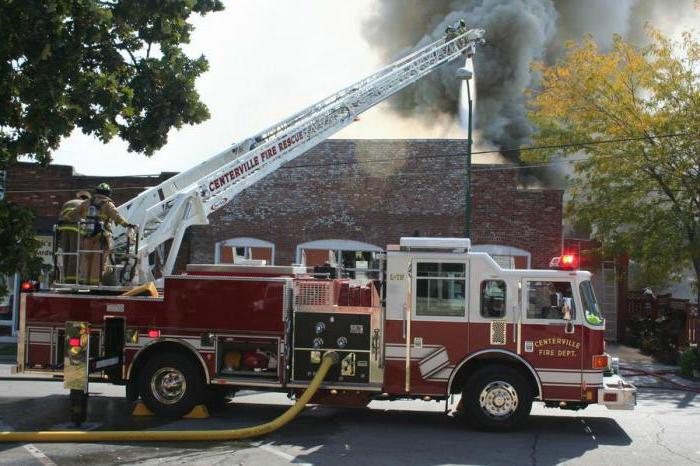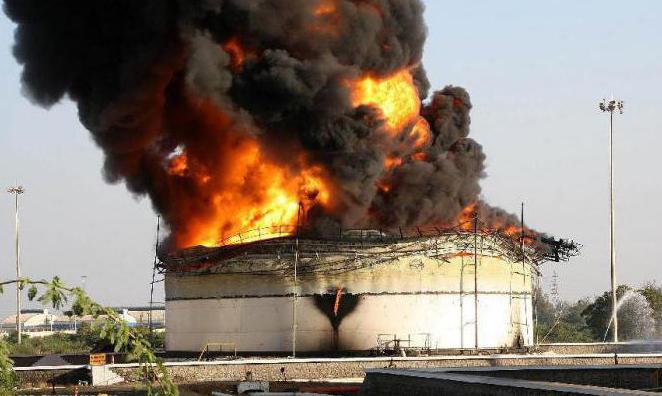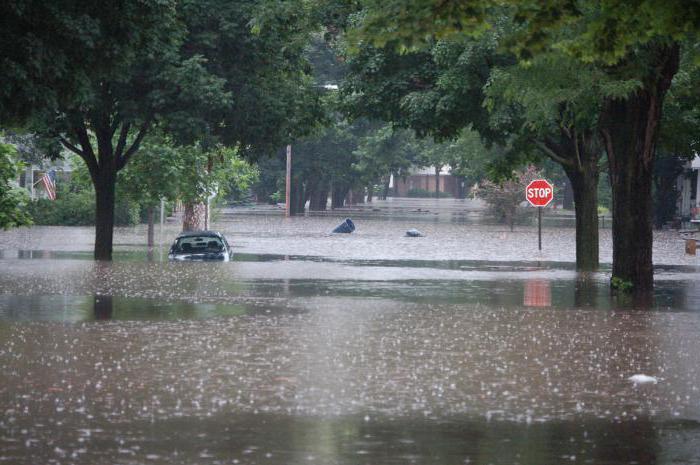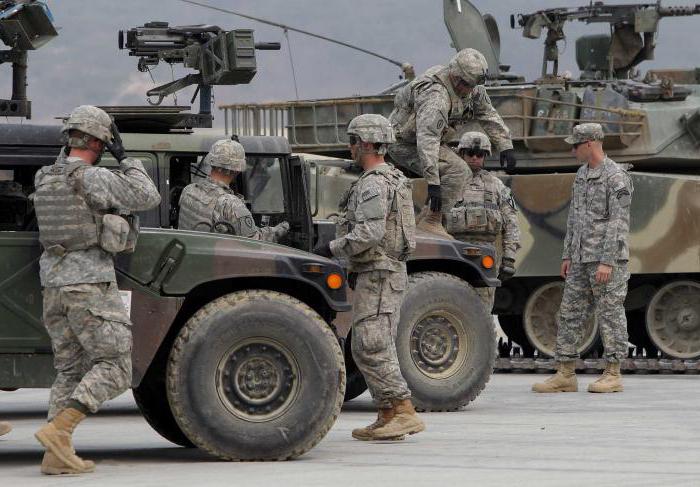We live in a time when emergencies can happen anywhere and be unpredictable. To be able to behave during such situations, you need to know what they are. The classification of emergencies depends on many factors, which we will consider in the article.
Emergency concept
Before dealing with the classification, it is necessary to understand what situations are called emergency. One can give such a definition that an emergency is a kind of situation that has developed in a certain territory. It may be caused by a technogenic situation, a dangerous natural phenomenon, or a social situation, if all of them have caused or will lead to casualties among the population, as well as material damage.
Any emergency can be prevented or reduce the risk of its occurrence. To do this, a number of events are planned, which are carried out in advance. There is such a thing as an emergency zone - this is the territory in which the situation arose.
Causes of emergency
Before figuring out how to classify emergencies, the causes of such situations should be carefully studied. They are divided into two large groups:
- Internal, which include: the use of sophisticated technologies in production, a low degree of qualification of working personnel, inaccuracies in projects, work on worn-out equipment, lack of labor discipline.
- External causes include: various natural disasters, hostilities, terrorism, the sudden cessation of the supply of gas, electricity.
If we consider the circumstances in which emergencies can occur, then they can be as follows:
- If there is a source of risk in the form of explosive or radioactive substances.
- Exposed to risk factors such as fire, explosion, gas leak.
- Being in the affected area of the population, animals and agricultural crops.

Scientists who study emergencies of various origins have found that they all differ in the presence of different periods in their course. In total, several stages are distinguished:
- The gradual accumulation of negative factors that will lead to an accident.
- The development of disaster.
- Extreme period with the release of the main dose of energy.
- Stage of attenuation of the intensity of the situation.
- Liquidation of consequences.
Studying emergency situations in Russia made it possible to find out the main causes of emergency situations and injuries:
- In more than 50.1% of cases, the human factor is to blame.
- Due to the fault of old machinery and equipment, accidents occur in 18.1%.
- Wrong technology for complex work - 7.8%.
- The external environment is to blame for emergency situations in 16.6% of cases.
- 7.4% are other factors.
From the presented data, it can be concluded that the classification of emergencies can be completely different, but the human factor plays a major role in their occurrence.
Emergency classification
If we take into account the area in which a dangerous situation arises, then the general classification of emergencies may look like this:
- Man-made emergency situations.
- Natural disasters.
- Environmental emergencies.
- Social disasters.
But in most countries, all emergencies are divided into 2 classes:
- Emergency of technogenic character. These include transport accidents, dangerous situations of fire, the release of toxic, chemical and radioactive substances, emergency situations at factories and agricultural enterprises.
- Natural emergencies include tornadoes, hurricanes, floods and other phenomena that arose due to the fault of the environment.
Whatever the classification of emergencies by the nature of their occurrence, they all have distinctive signs that bring them together:
- There is a serious threat to life or human health.
- Living conditions are violated.
- Serious economic damage is being done.
- The state of the environment is getting worse.
Classification of emergencies by scale of consequences
Any emergency can cover territories of various sizes, as well as lead to different numbers of victims. Given all this, emergencies can be divided into several groups:
- Local. In such situations, the number of victims usually does not exceed 10 people, the conditions for normal existence become worse for 100 people, the damage from such an accident is approximately 40-100 times the minimum wage at the time of the accident. Emergency situation does not leave the object.
- Local emergency. In this case, the number of victims rises to 50 people, and up to 300 people can suffer from poor living conditions. Material damage is already equal to more than 1000 minimum wages. The accident zone captures only one city or another settlement.
- Regional emergencies go beyond the boundaries of the region. Up to 500 people can become affected, and the damage is up to 0.5 million minimum wages.
- Republican emergencies cover more than two areas. There are more than 500 injured, and material damage is up to 0.5 million minimum wages at the time of the accident.
- Cross-border situations involve neighboring republics or countries. The number of victims of such accidents reaches one million. Accordingly, the damage cannot be called insignificant.

Depending on the area occupied by the emergency, the consequences are eliminated by various organizations. For example, if in a local accident all responsibility for liquidation falls on the forces of the organization itself, then in a regional accident, government bodies are already involved.
What is the classification of emergencies based on? We can say that all disasters and accidents are classified taking into account:
- areas of occurrence on which the nature of the accident depends;
- the magnitude of the consequences, given the damage;
- belonging to one or another grow n / a.
Now it is the turn to consider various types of emergencies.
Man-made accidents
The classification of anthropogenic emergencies includes various types and groups, we will consider them.
1. The first can include transport accidents, which include the following types:
- Emergency situations and catastrophes on all types of passenger transport.
- Emergencies in oil or gas pipelines.
2. Dangerous fire situations and explosions include fire hazardous and explosive emergencies in residential buildings, industrial facilities and public transport, as well as emergency situations in mines.
3. Accidents during which an SDYA surge occurs:
- Emission at industrial enterprises as a result of violation of the norms for processing or storage of substances and materials.
- Accidents in plants and factories with the threat of leakage of toxic substances.
4. The classification of man-made emergencies also includes increasing the maximum concentration of harmful substances:
- The presence of toxic and chemical substances in the air and soil.
- Exceeding the MPC of substances in water resources.
5. Emergencies in which there is a release of radioactive substances.
6. Destruction of buildings as a result of emergency situations:
- The destruction of transport communications.
- The collapse of buildings of industrial importance.
- The occurrence of damage that requires the evacuation of people.

7. Emergencies at power plants and electric networks - this is also one of the points that includes the classification of man-made emergencies.
eight.Emergencies in life support systems, which include:
- Sewer systems.
- Networks that supply heat and water to the population.
- Gas pipelines.
9. Accidents that lead to disruption of telephone communications.
10. Emergency at treatment facilities.
11. Hydrodynamic accidents, for example, breakthrough of dams, violation of the descent of reservoirs.
As can be seen from this list, the classification of emergencies of a technogenic nature is quite extensive and includes numerous types of emergency situations. The elimination of the consequences of each accident is carried out by various units.
Natural emergency situations
The classification of emergencies of a natural nature also includes groups and varieties of emergency situations. Let's consider them in more detail.
- The first group includes geological accidents, which include:
- Landslides.
- Earthquakes.
- Dips on the Earth's surface.
2. Meteorological:
- Squally wind.
- Hail.
- Dust storms.
- Pouring rain.
- Snowstorm and snowstorm.
- High temperatures in summer.
- Too sharp drop in temperature in winter.
- Drought.
3. The classification of natural emergencies includes hydrological accidents, these include:
- Too high water level rise during floods or floods.
- Unexpected freezing of rivers, lakes and reservoirs.
- A strong increase in the level of groundwater, which is dangerous by flooding of residential buildings.

4. The classification of emergencies of a natural nature will not be complete unless fire hazardous situations in nature are included.
5. Epidemics of various diseases among people.
6. Poisoning by toxic or chemical substances of a large number of people.
7. Exotic and dangerous diseases of agricultural animals and massive outbreaks of infectious pathologies.
8. Poisoning of animals, which captures a large number of individuals.
9. The sudden and inexplicable death of representatives of the fauna.
10. Diseases of agricultural plants and forests, as well as pest infection.
The classification of emergencies of a natural and technogenic nature has been considered, but environmental accidents, which are not uncommon recently, cannot be ignored.
Environmental emergencies
Environmental emergencies are conditions that are associated with changes in land, air and water. And since human health depends on the quality of these media, it is important that not only the classification of emergencies of a natural and technogenic nature be considered, but also situations of an environmental nature. This classification is based on several factors:
- Source of emergency:
- Landslides, avalanches.
- The collapse of the earth's surface due to mining.
2. There is a change in sushi:
- Violation of the soil structure, which leads to salinization, desertification or waterlogging.
- Depletion of natural resources.
- Excessive overflow of landfills with household and industrial waste.
- The impact of human activities on dramatic changes in climate or weather events.
- The concentration of harmful and toxic impurities in the environment begins to exceed the permissible norm many times.
3. Changes affecting the atmosphere:
- Noise increase in megacities.
- Acid precipitation.
- Temperature inversion.
4. Critical changes in the water shell of our planet:
- Water pollution and depletion.
- Decrease in numbers and extinction of some species of marine animals and plants.
5. Change in the biosphere:
- A sharp decrease in the ability of the biosphere to self-reproduce its resources.
- Mass extinction of animals.

Environmental emergencies cannot be ignored, as in some cases they can lead to sad consequences for humans. We can cite such well-known examples: mass hair loss in children in Chernivtsi, “bubble” pregnancy in Vietnam, and many others.
Such situations can arise in large cities due to the constant negative impact of smog, toxic emissions from enterprises. That is why it is important to regularly monitor the environmental situation in a populated area. Humanity has recently been increasingly affected by serious environmental situations. No matter how you try to prevent all this, but you can’t stop the impending landslides, tsunamis, accident with the release harmful substances. We constantly have to deal with the consequences of such accidents, and they are quite serious.
If we compare environmental problems with any others, they are in the first place in the depth of their negative impact. And the worst thing is that the cause of such emergencies is the person himself. Most often, people try to neglect the laws of nature, underestimate the importance of solving environmental problems, and this, unfortunately, has serious consequences. Man should understand for a long time that nature is not a bottomless pantry from which one can draw endlessly, but a living organism, whose health and condition has long been weakened by an unceremonious invasion.
Therefore, the general classification of emergencies in terms of the magnitude of the consequences should place environmental disasters first. Natural and man-made accidents sometimes do not go to any comparison with them.
Classification of social emergencies
Extreme situations can be triggered not only by natural factors or man-made, but also social. A classification of emergency situations of a social nature also exists, it is based on the following principles:
- The reason for the occurrence: deliberate actions, for example, political conflicts, military clashes, and unintentional, which include epidemics, a lean year and others.
- In terms of duration, emergencies can be short-term, for example, robbery, attempt, and long-term - inflation, unemployment.
- The speed with which the spread of social emergency occurs is also different, for example, a political conflict is rapidly brewing and spreading and the prerequisites of the revolution are gradually growing.
- Classification of emergencies by social scale: local, local, covering one locality or region, regional, national and global.
- They take into account the possibility of preventing emergencies; in this regard, they identify inevitable situations (consequences of epidemics and natural disasters) and those that can be prevented (political conflicts, wars).
If we compare social emergencies with an emergency of a different nature, then we can say that they are easiest to predict, as they are directly related to the actions of society. But often such forecasts are subjective, which usually interferes with objectivity in the analysis of phenomena and processes occurring in society.
Stages of development of social emergencies
The classification of emergency situations of a social nature has been considered, but they all go through certain stages of development:
- During the first stage, risk factors accumulate. This is one of the most important periods, which in duration can take a few days or decades. These include the contradictions in society that have accumulated over the years, and preparations for the outbreak of hostilities.
- Initiation of the emergency itself. There comes a moment when the accumulated factors can no longer be restrained, and external manifestations begin.
- The emergency itself. At this stage, social factors begin to affect the population and social structures. The duration of this period is difficult to predict, as well as its consequences.
- The damping period begins with the closure of the source of danger and ends with the localization of the emergency and the elimination of its consequences.

Most often, all emergencies, including social ones, go through several phases:
- Gradual accumulation of negative factors.
- Threat.
- A warning.
- Initiation of an emergency factor.
- Emergency development.
- Assessment of the situation.
- Taking measures to eliminate the consequences.
- Assistance to victims.
- Recovery phase.
If we talk about social emergencies, it should be noted that they require the active intervention of the whole society. Often it is they who provoke man-made emergencies and disasters. In the period of such an emergency, the moral balance in society is upset, and the consequences can be more widespread and tragic in comparison with emergency situations of a different nature.
Social Conflict Behavior
The classification and characterization of emergency situations of a social nature has been considered, but it is necessary to mention that quite often social conflicts expressed in the form of rallies, demonstrations, riots. Often the actions of the crowd of people who participated in all this become unpredictable, so it is important to know some rules of your own safety:
- Accidentally or deliberately falling into such a crowd, it is necessary to soberly assess the situation.
- Do not come close to too aggressive people.
- Avoid places near garbage cans, bins, containers, as explosive objects may be left in them.
- Care must be taken not to move against the crowd.
- Do not stay near glass shop windows, pillars and fences.
- It is advisable to get rid of objects that are in the hands, for example, a bag, an umbrella.
- It is advisable to clasp your hands at chest level to protect your diaphragm.
- If a fall occurs, then you need to cover your head with your hands and try to get up quickly.
- Do not panic, it will prevent a sober assessment of the situation.
 In order not to have to look for a way out of this situation, it is better to avoid participating in spontaneous rallies and conflicts.
In order not to have to look for a way out of this situation, it is better to avoid participating in spontaneous rallies and conflicts.
We have considered in detail the classification of natural and man-made emergencies. We did not forget about environmental and social disasters. I want to say that regardless of the nature of the situation, the role of the human factor is always quite high. That is why mankind has to reconsider a lot in its relation to nature, to each other, so that later it does not have to eliminate the terrible consequences of disasters.






